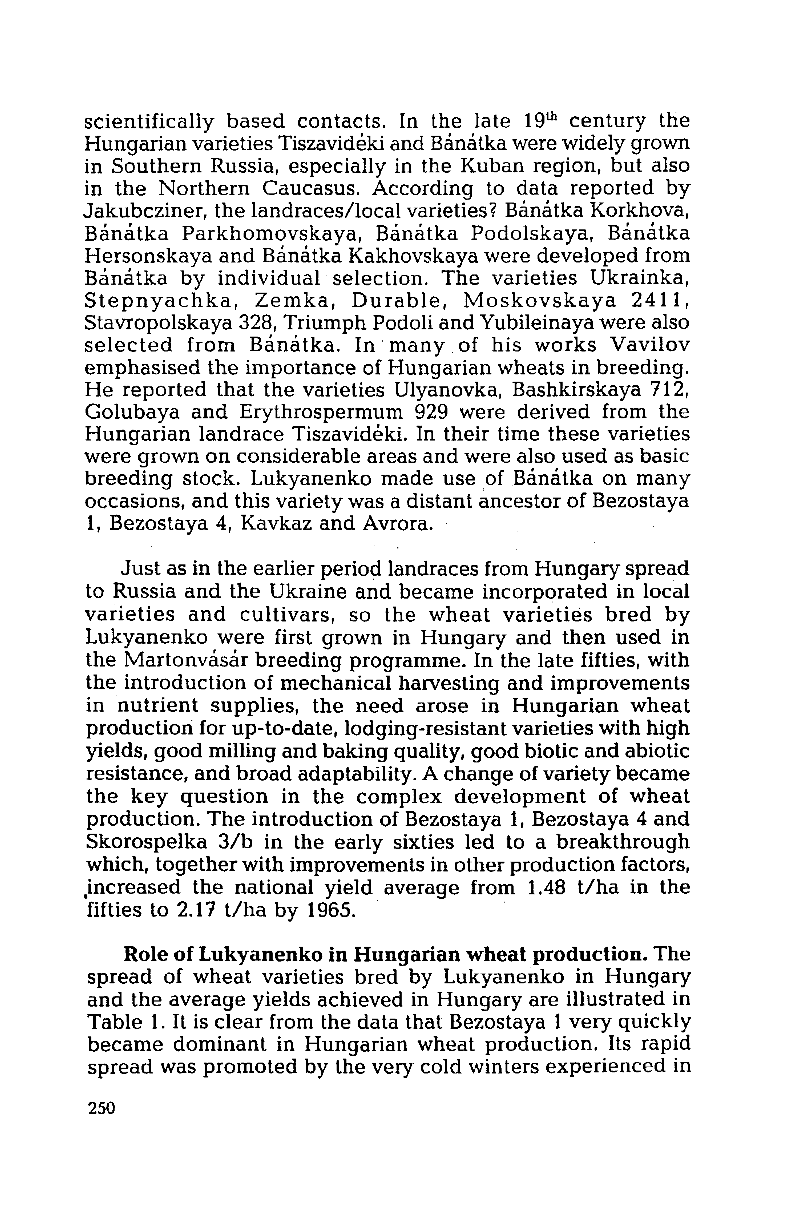

scientifically based contacts. In the late 19th century the
Hungarian varieties Tiszavideki and Banatka were widely grown
in Southern Russia, especially in the Kuban region, but also
in the Northern Caucasus. According to data reported by
Jakubcziner, the landraces/local varieties? Banatka Korkhova,
Banatka Parkhomovskaya, Banatka Podolskaya, Banatka
Hersonskaya and Banatka Kakhovskaya were developed from
Banatka by individual selection. The varieties Ukrainka,
S tepnyachka, Zemka, Durable, Moskovskaya 2411,
Stavropolskaya 328, Triumph Podoli and Yubileinaya were also
selected from Banatka. In many of his works Vavilov
emphasised the importance of Hungarian wheats in breeding.
He reported that the varieties Ulyanovka, Bashkirskaya 712,
Golubaya and Erythrospermum 929 were derived from the
Hungarian landrace Tiszavideki. In their time these varieties
were grown on considerable areas and were also used as basic
breeding stock. Lukyanenko made use of Banatka on many
occasions, and this variety was a distant ancestor of Bezostaya
1
, Bezostaya 4, Kavkaz and Avrora.
Just as in the earlier period landraces from Hungary spread
to Russia and the Ukraine and became incorporated in local
varieties and cultivars, so the wheat varieties bred by
Lukyanenko were first grown in Hungary and then used in
the Martonvasar breeding programme. In the late fifties, with
the introduction of mechanical harvesting and improvements
in nutrient supplies, the need arose in Hungarian wheat
production for up-to-date, lodging-resistant varieties with high
yields, good milling and baking quality, good biotic and abiotic
resistance, and broad adaptability. A change of variety became
the key question in the complex development of wheat
production. The introduction of Bezostaya 1, Bezostaya 4 and
Skorospelka 3/b in the early sixties led to a breakthrough
which, together with improvements in other production factors,
.increased the national yield average from 1.48 t/ha in the
fifties to 2.17 t/ha by 1965.
Role o f Lukyanenko in Hungarian wheat production.
The
spread of wheat varieties bred by Lukyanenko in Hungary
and the average yields achieved in Hungary are illustrated in
Table 1. It is clear from the data that Bezostaya 1very quickly
became dominant in Hungarian wheat production. Its rapid
spread was promoted by the very cold winters experienced in
250
Научная электронная библиотека ЦНСХБ









